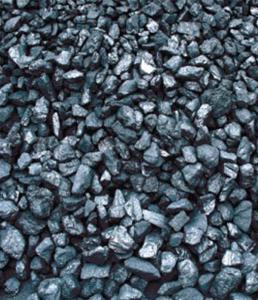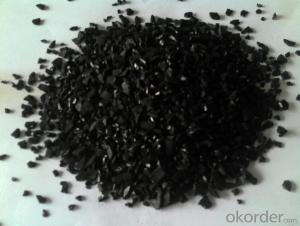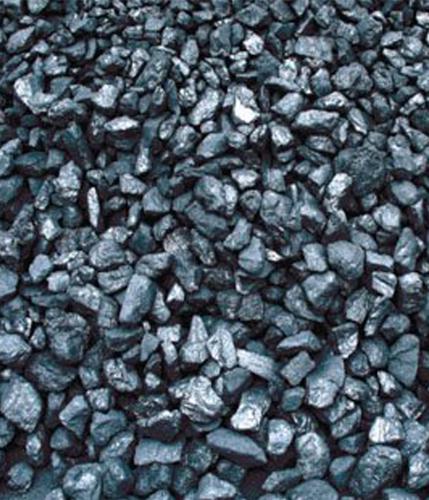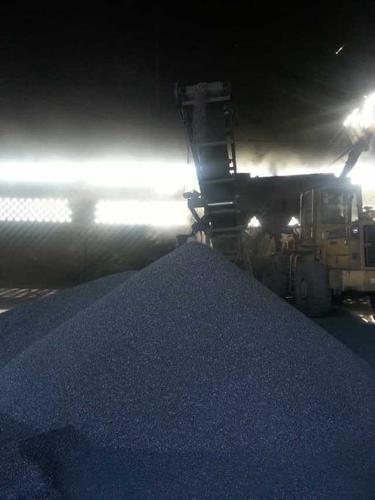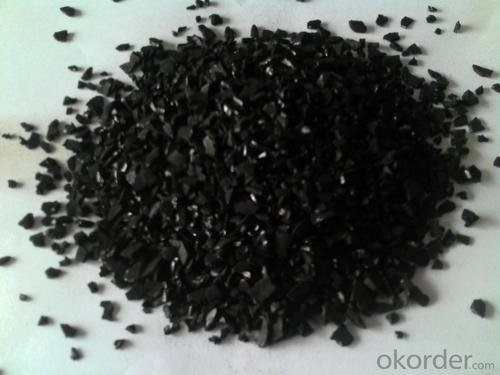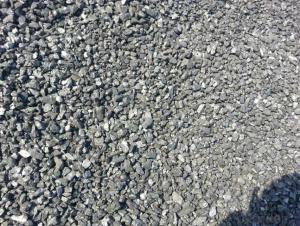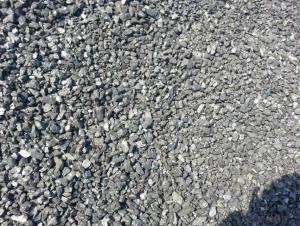Low S Calcined Anthracite for Sale of CNBM in China
- Loading Port:
- Tianjin
- Payment Terms:
- TT OR LC
- Min Order Qty:
- 1 m.t.
- Supply Capability:
- 10000000 m.t./month
OKorder Service Pledge
OKorder Financial Service
You Might Also Like
1.Structure of Calcined Anthracite Description
This product is made from high-quality anthracite as raw materials, shape of columnar respectively, particles, powder, such as spherical shape, has high strength, adsorption speed, adsorption capacity, high specific surface area is larger, developed pore structure, pore size is between coconut shell activated carbon and wood charcoal.
Mainly used for high-end air purification, waste gas treatment, waste incineration, high pure water treatment, wastewater treatment, wastewater treatment, aquatic animals, desulphurization and denitration, and can effectively remove the impurities and contaminants in the gas and liquid as well as a variety of gas separation and purification, also can be widely used in all kinds of low boiling point substances adsorption recycling, deodorization oil removal, etc.
2.Main Features of the Calcined Anthracite
Calcined Anthracite is a kind of filter used in water treatment. It is suitable for the treatment of common acid, the middle degree alkali. This product has large surface area, and its various indexes all exceed the Construction Department’s standard. Anthracite filter is especially selected from the deep well minerals, so it includes the highest percentage of carbo. It must have been filtered and washed to make sure it can be used for water filting. Since it has better granular maintaining ability, so it can improve the floating granular’s cleaning ability.
3. Calcined Anthracite Images
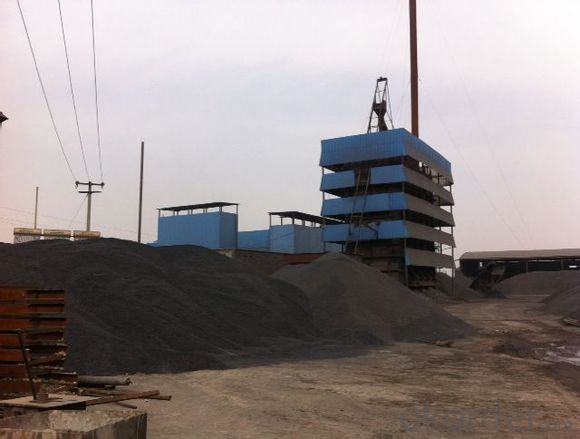
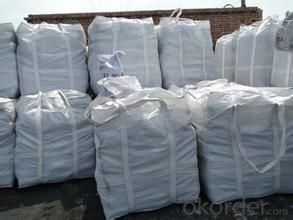
4. Calcined Anthracite Specification
NO. | Fixed Carbon | Sulphur | Moisture | Volatile | Graininess |
>= | <= | <= | <= | Granularity distribution 90% | |
T9805 | 98.50% | 0.05% | 0.50% | 0.50% | 1-5mm |
T9850 | 98.50% | 0.50% | 0.50% | 0.80% | 1-5mm |
T9530 | 95.00% | 0.30% | 0.26% | 1.14% | 1-4mm |
T9030 | 90.00% | 0.30% | 0.30% | 1.20% | 1-5mm |
T8020 | 80.00% | 0.20% | 1.30% | 3.50% | 1-5mm |
5.FAQ of Calcined Anthracite
1). Q: Are you a factory or trading company?
A: We are a factory.
2). Q: Where is your factory located? How can I visit there?
A: Our factory is located in ShanXi, HeNan, China. You are warmly welcomed to visit us!
3). Q: How can I get some samples?
A: Please connect me for samples
4). Q: Can the price be cheaper?
A: Of course, you will be offered a good discount for big amount.
- Q: How many points can Yongan change for 1 carbon coins?
- Every Thursday at 19:00, carbon points change for carbon coins, 19:30 carbon coins exchange gifts
- Q: What are the impacts of carbon emissions on coral reefs?
- Coral reefs are significantly affected by carbon emissions, with one of the most notable consequences being ocean acidification. This occurs when excess carbon dioxide (CO2) from the atmosphere is absorbed, causing the ocean to become more acidic. As a result, coral reefs struggle to build and maintain their calcium carbonate skeletons, which are crucial for their structure and survival. Consequently, their growth rates decrease, and their resilience weakens, making them more susceptible to damage from storms, disease, and other stressors. Moreover, the increasing ocean temperatures caused by carbon emissions have led to widespread events of coral bleaching. When corals are exposed to prolonged high temperatures, they expel the symbiotic algae (zooxanthellae) that live within their tissues. These algae provide essential nutrients and vibrant colors to the corals. Without them, corals become pale or completely white, a phenomenon known as bleaching. While corals can recover if the stressors decrease, severe or prolonged bleaching can result in coral death and the subsequent degradation of the reef ecosystem. Additionally, carbon emissions contribute to the intensification of storms and other extreme weather events, posing a direct threat to coral reefs. Stronger storms physically damage the reefs, breaking their fragile structures and reducing their resilience. Moreover, the sediment runoff from land, often exacerbated by storms, smothers corals and hinders their ability to feed and grow. The impacts of carbon emissions on coral reefs are not only detrimental to the diverse marine ecosystems but also to the millions of people who rely on them for food, income, and coastal protection. Coral reefs support a wide range of marine life, provide livelihoods for many communities through fishing and tourism, and act as natural barriers against storm surge and coastal erosion. The degradation of coral reefs due to carbon emissions jeopardizes the livelihoods and well-being of these communities, as well as the overall health and biodiversity of our oceans. To address these impacts, it is crucial to reduce carbon emissions by transitioning to cleaner, renewable energy sources, promoting sustainable practices on land to minimize runoff and pollution, and implementing effective management and conservation measures to protect and restore coral reef ecosystems.
- Q: What are the advantages of carbon-based batteries?
- There are several advantages of carbon-based batteries that make them a popular choice in various applications. Firstly, carbon-based batteries, such as alkaline batteries, have a longer shelf life compared to other types of batteries. This means that they can retain their charge for extended periods of time, making them ideal for devices that are used infrequently or in emergency situations. Secondly, carbon-based batteries offer a higher energy density, meaning that they can store more energy in a smaller package. This makes them more compact and lightweight, which is advantageous for portable electronic devices like smartphones, laptops, and cameras. Furthermore, carbon-based batteries typically have a lower self-discharge rate, meaning they lose less charge over time when not in use. This allows them to maintain their power for longer periods without requiring frequent recharging or replacement. Carbon-based batteries also tend to have a higher discharge rate, meaning they can deliver power more quickly when needed. This is beneficial for devices that require a sudden burst of energy or for high-drain applications like digital cameras or power tools. Moreover, carbon-based batteries are generally more cost-effective compared to other types of batteries. They are widely available, inexpensive to produce, and can be easily recycled, reducing environmental impact. In conclusion, the advantages of carbon-based batteries include a longer shelf life, higher energy density, lower self-discharge rate, higher discharge rate, cost-effectiveness, and environmental friendliness. These features make them a reliable and efficient choice for a wide range of electronic devices and applications.
- Q: What are the impacts of carbon emissions on human health in developing countries?
- Developing countries are significantly affected by carbon emissions, which have considerable consequences for human health. The burning of fossil fuels and deforestation are the primary sources of these emissions, which contribute to the deterioration of air quality and give rise to a variety of health problems. Respiratory diseases are among the most immediate and visible impacts caused by high levels of carbon emissions. These emissions release harmful pollutants such as particulate matter and nitrogen dioxide, which can irritate the respiratory system and worsen existing conditions like asthma and bronchitis. In developing countries where access to healthcare may be limited, these respiratory diseases can be particularly harmful and lead to higher mortality rates. Furthermore, climate change, driven by carbon emissions, indirectly affects human health. Rising temperatures and shifting weather patterns can facilitate the spread of diseases transmitted by vectors, such as malaria and dengue fever. Developing countries often lack the necessary infrastructure and resources to effectively combat these diseases, resulting in increased rates of infection and mortality. Additionally, carbon emissions contribute to the formation of ground-level ozone, a harmful air pollutant. Exposure to high levels of ozone can cause respiratory problems, cardiovascular issues, and even premature death. Developing countries, with their limited access to healthcare and vulnerability to extreme weather events, may experience higher rates of illness and mortality due to ozone exposure. Moreover, carbon emissions contribute to the acidification of oceans, which negatively impacts marine ecosystems. This, in turn, affects the availability and quality of seafood, which is a vital source of nutrition for many people in developing countries. Impaired access to nutritious food can lead to malnutrition and various health issues, especially among vulnerable populations such as children and pregnant women. In conclusion, the impacts of carbon emissions on human health in developing countries are severe. The release of pollutants from burning fossil fuels and deforestation leads to respiratory diseases, the spread of vector-borne illnesses, ozone-related health problems, and nutritional deficiencies. These health impacts underscore the importance of prioritizing sustainable development and transitioning to clean energy sources in developing countries. Additionally, international cooperation is crucial in addressing this global issue.
- Q: How does carbon impact the availability of clean transportation?
- Carbon impacts the availability of clean transportation through its contribution to greenhouse gas emissions. Carbon dioxide (CO2) is a major greenhouse gas responsible for climate change, and the burning of fossil fuels in traditional transportation systems releases significant amounts of CO2 into the atmosphere. This has led to the urgent need for cleaner alternatives in the transportation sector. Clean transportation options, such as electric vehicles (EVs) and hydrogen fuel cell vehicles, are designed to minimize carbon emissions. By utilizing electricity or hydrogen as the primary source of energy, these vehicles produce zero tailpipe emissions, significantly reducing the carbon footprint associated with transportation. However, the availability and adoption of these clean transportation solutions are directly impacted by carbon-related factors. One key factor is the energy infrastructure required to support clean transportation. Electric vehicles, for example, rely on charging stations and a reliable power grid. The production of clean electricity from renewable sources, such as solar and wind, is crucial to ensure that EVs are truly emission-free. Therefore, the carbon intensity of the electricity grid plays a vital role in determining the environmental impact of electric transportation. Furthermore, the availability of carbon-neutral fuels is another important aspect. Hydrogen fuel cell vehicles, which convert hydrogen into electricity to power the vehicle, require a readily available and sustainable source of hydrogen. Currently, most hydrogen is produced from natural gas, which generates CO2 emissions during the production process. However, advancements in technologies like electrolysis, which uses renewable electricity to split water into hydrogen and oxygen, are paving the way for carbon-free hydrogen production. Additionally, carbon pricing and policies also impact the availability of clean transportation. By putting a price on carbon emissions, governments and organizations incentivize the adoption of low-carbon transportation options. This can lead to increased investment in clean transportation infrastructure, research, and development, ultimately driving the availability and affordability of clean transportation solutions. In conclusion, carbon emissions from traditional transportation systems have necessitated the development and availability of clean transportation alternatives. Factors such as the energy infrastructure, availability of carbon-neutral fuels, and supportive policies all influence the availability and accessibility of clean transportation. By addressing carbon impacts, we can accelerate the transition to a more sustainable and environmentally-friendly transportation system.
- Q: Can carbon be recycled?
- Indeed, carbon has the potential to undergo recycling. Carbon recycling pertains to the process of capturing and reutilizing carbon dioxide (CO2) emissions rather than releasing them into the atmosphere. There exist various approaches to carbon recycling, which include: 1. Carbon capture and storage (CCS): This procedure entails the capture of CO2 emissions from power plants or industrial facilities, followed by their storage underground or in deep ocean formations. CCS aids in preventing the release of CO2 into the atmosphere, thereby reducing its impact on climate change. 2. Carbon capture and utilization (CCU): CCU involves capturing CO2 emissions and transforming them into valuable products. For instance, CO2 can be converted into fuels, chemicals, or construction materials through a range of chemical and biological processes. 3. Enhanced oil recovery (EOR): This technique encompasses the injection of captured CO2 into oil reservoirs to enhance the quantity of recoverable oil. In addition to recycling carbon, it also boosts oil production. 4. Biological carbon sequestration: This method employs plants, trees, and other biological organisms to absorb CO2 from the atmosphere through photosynthesis. By promoting reforestation, afforestation, and sustainable land management practices, we can augment carbon sequestration and offset emissions. While carbon recycling technologies are still under development and refinement, they present promising solutions for mitigating greenhouse gas emissions and addressing climate change. By recycling carbon, we can diminish our dependence on fossil fuels, minimize the release of CO2 into the atmosphere, and strive towards a more sustainable and low-carbon future.
- Q: What's a carbon cloth to do as a fish pole?
- This is difficult, usually with a lathe like tool, by heating in the brush, layer by layer roll up, and finally cut off paint, baking
- Q: Isotopes of carbon
- There are three kinds of nature of carbon isotope, stable isotopes of 12C, 13C and 14C 14C of the radioactive isotope, the half-life is 5730 years, the application of 14C mainly has two aspects: one is the determination of biological death in archaeology, radioactive dating method; the two is labeled with 14C compound as a tracer, exploration the micro motion of chemistry and life science.
- Q: How does carbon impact the availability of freshwater resources?
- Carbon impacts the availability of freshwater resources through various interconnected processes. One of the major ways carbon affects freshwater availability is through climate change. The increased levels of carbon dioxide in the atmosphere, primarily due to human activities such as burning fossil fuels, contribute to global warming. This leads to changes in precipitation patterns, including altered rainfall distribution and intensity. Warmer temperatures caused by carbon emissions can increase evaporation rates and lead to more frequent and severe droughts in certain regions. This reduces the amount of water available for freshwater resources such as rivers, lakes, and reservoirs. Additionally, the changing climate can disrupt natural water cycles, affecting the recharge of groundwater aquifers, which are crucial sources of freshwater. Furthermore, carbon impacts the quality of freshwater resources. Acid rain, a result of increased carbon emissions reacting with atmospheric moisture, can acidify freshwater bodies and make them inhospitable for many aquatic organisms. This disrupts ecosystems and can lead to the loss of species that rely on freshwater resources for their survival. Another way carbon impacts freshwater availability is through its influence on land use. The conversion of forests and wetlands into agricultural or urban areas releases carbon stored in vegetation and soil. This not only contributes to carbon emissions but also reduces the capacity of natural ecosystems to retain and filter water. Forests, for example, play a vital role in maintaining the water cycle by absorbing rainfall and releasing it gradually into streams and groundwater. Deforestation disrupts this process and can lead to decreased water availability downstream. In conclusion, carbon emissions have a significant impact on the availability of freshwater resources. Through climate change, carbon alters precipitation patterns, leading to droughts and reduced water availability. It also affects the quality of freshwater through processes like acid rain. Additionally, land-use changes driven by carbon emissions can further decrease freshwater availability by disrupting natural water cycles.
- Q: DNF new advanced furnace rock carbon reinforcement +10 50 powder weapons, the upper 11 probability of success is how much, how many advanced furnace rock carbon?
- Dungeon Fighter Online conducted an update in August 3rd, and this update presents the warriors who have been looking forward to the sea Warriors 2 signing up for gift activities and advanced furnace rock carbon. Reinforcement has always been a constant problem for DNF, where players always want their equipment to be much higher, but the roads behind +10 are difficult to walk and will crash as soon as they are equipped with care. And for the pursuit of the highest quality of the players will be a big blow ah, so the players would like to do everything possible to achieve the purpose of strengthening. Among them, the strengthening of the pad installed has long been common, and we have often debated whether it has any use, but now a real can enhance the strengthening of the probability of the emergence of things, that is, advanced carbon! Next, Xiao Bian will analyze how much this 110% chance increases and how best to play the best role of this carbon. As we all know, advanced carbon can only strengthen more than +10 of equipment (including +10), in that case, let us first look at the original equipment reinforcement probability. Grade +10~+11, +11~+12, +12~+13, +13~+14, +15~+16, +14~+15, chance 33.9%, 28%, 20.7%, 17.3%, 13.6%, 10.1%, 10 strong 11 as an example, the original probability of 33.9%*110% is 37.29%.
Send your message to us
Low S Calcined Anthracite for Sale of CNBM in China
- Loading Port:
- Tianjin
- Payment Terms:
- TT OR LC
- Min Order Qty:
- 1 m.t.
- Supply Capability:
- 10000000 m.t./month
OKorder Service Pledge
OKorder Financial Service
Similar products
Hot products
Hot Searches
